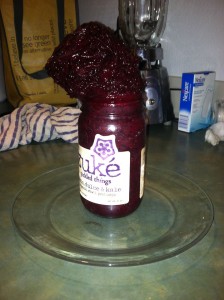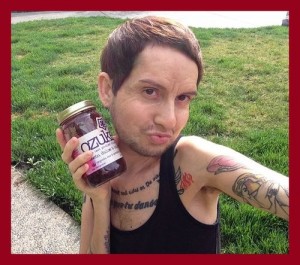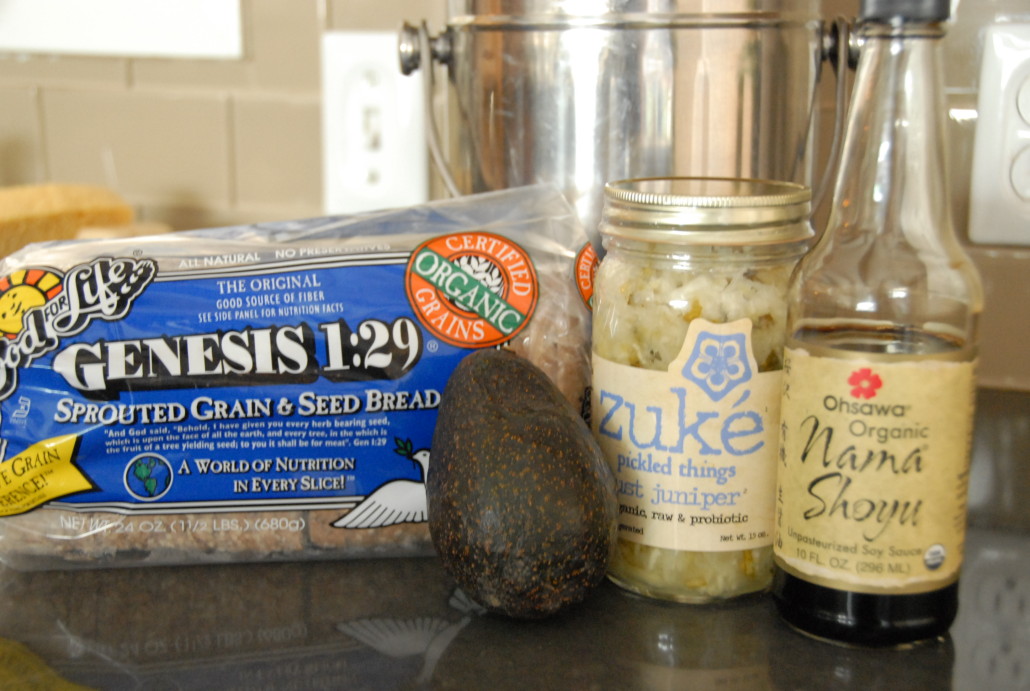Ecosalon Foodie Underground: You Can Ferment That
Foodie Underground: You Can Ferment That
You’ve been making your own kombucha for months (ok, years) and pickling is old news to you, but have you taken your fermented food obsession to the next level? Grabbed a slot at the local market and opened up a stand to sell your goods? Spend any time at your weekend farmers market and you’re sure to find an artisan pickle, kraut or kim chi maker.
“We can pickle that,” might be the mantra of any lover of the television show Portlandia, but all jokes aside, fermented foods are good for you (and often served in mason jars). Making fermented foods at home however is one thing, running your own fermented business is quite another.
“You should start a restaurant/catering company/baking business/etc.” are words that many a foodie have heard from a friend or two, but turning a passion for food into a business is a feat in and of itself, which is why it’s inspiring to meet people that are doing just that. I perked up recently when I got an intro to the co-founder of what a friend called “the most elegant pickle company on the planet.” When you’re the Foodie Underground columnist, you just can’t turn such an introduction down.
The pickle company is called Esoteric Food Company, based in Boulder, Colorado and responsible for jars of fermented goodness like Beets, Hijiki & Kale and Dill, Caraway & Cabbage. As they put it:
We love food. Learning about food culture is our impetus, our drive and our reward. We live to tinker with, to savor, to understand flavor and nutrition in old and new ways. We simply love making good things to eat to share with others and these pickles are our way of inviting you in to the esoteric circle.
If there ever was an intriguing food mission statement, that might just be it.
I caught up with co-founder Willow King to learn more about the fermentation business and we even got a recipe out of the deal.
Tell us about your food background, what got you into fermented foods in the first place?
My business partner Mara grew up in Hong Kong and is a long time sushi chef and general food goddess. She and I started getting together for “Food Mondays” about 2 years ago and making things that were hard, weird or that we just generally curious about. We made raw cheeses, butter, sausage, sourdough, we canned and we fermented. Something about the ferments sort of just took over (no pun intended) and we have been doing them ever since. We have a mutual friend in town who has grown many businesses from Karaoke bars to energy drinks and he encouraged us to take it to the wholesale level. Mara and I are both English majors and at the time I was teaching Literature and Mara was teaching yoga and getting ready to give birth to her third child. It seemed like a bit of a pipe dream, but we starting tinkering with label designs, jar options, a website and pretty soon we had a business on our hands.
You have everything from carraway to kale… how do you come up with your recipes?
Our recipes come from both Asian and Euro traditions- Korean, Japanese, Polish, Scandinavian, German. They are a pastiche of flavors from our past and new combinations. This week’s market specials were daikon and d’anjou pear kim chi, juniper berry kraut and brined baby carrots with dill.
Why do you think fermented foods have had such a revival?
Fermented foods are a really great metaphor. They are a sort of alchemy that you can eat and I think people are really waking up the fact that sanitized, factory made, processed foods have lost a lot of their magic by the time they make it to your mouth. There is a growing awareness and live, raw, organic foods can balance and support our immune and digestive systems, as well as boost our moods.
You are certainly part of a growing movement of artisan food makers. In a world of mass marketed foods and big businesses, why do you think “underground” businesses like yours are seeing such success and positive response?
We know so many amazing food crafters- bakers, jam makers, kombucha and jun brewers- you name it. It is really encouraging to see these small businesses thriving and really being supported by their communities. In many ways, we are just going back to what we have always known: Good food is simple and comes straight from the source. We like to know who is making what we are eating- it is the oldest form of food safety!
How does one get started doing their own fermented foods?
Fermenting vegetables is a pretty simple process and very fun to experiment with. Fermenting dairy and meats can be a bit more complicated and requires exact procedures and temperatures to be safe. If you are interested in experimenting we recommend starting with simple sauerkraut and then expand from there.
Recipe: Simple Sauerkraut
To begin you will need a ball jar, 1 medium cabbage, sea salt and starter like whey or for a vegan option you can use kombucha. Each starter produces different results and flavors so you can try a few and find the one you like best.
Core and shred the cabbage and then spread on a tray or work surface. Pound the cabbage with a wooden hammer (or a rolling pin can work) until the juices start to release and the cabbage softens. Place in a wide mouth ball jar and press down with a fist (you can use a cabbage leaf as a top and the press on that) until the veg is submerged in liquid- you can add the starter at this time. Cover and leave at room temp for about 3 days- you may like it stronger in which case you could let it go a few more days. When you are satisfied with the taste transfer to cold storage where it will last for up to 6 months.
Editor’s note: This is the latest installment of Anna Brones’s weekly column at EcoSalon, Foodie Underground, discovering what’s new and different in the underground food movement, from supper clubs to mini markets to the culinary avant garde.
Image: Esoteric Food Company












